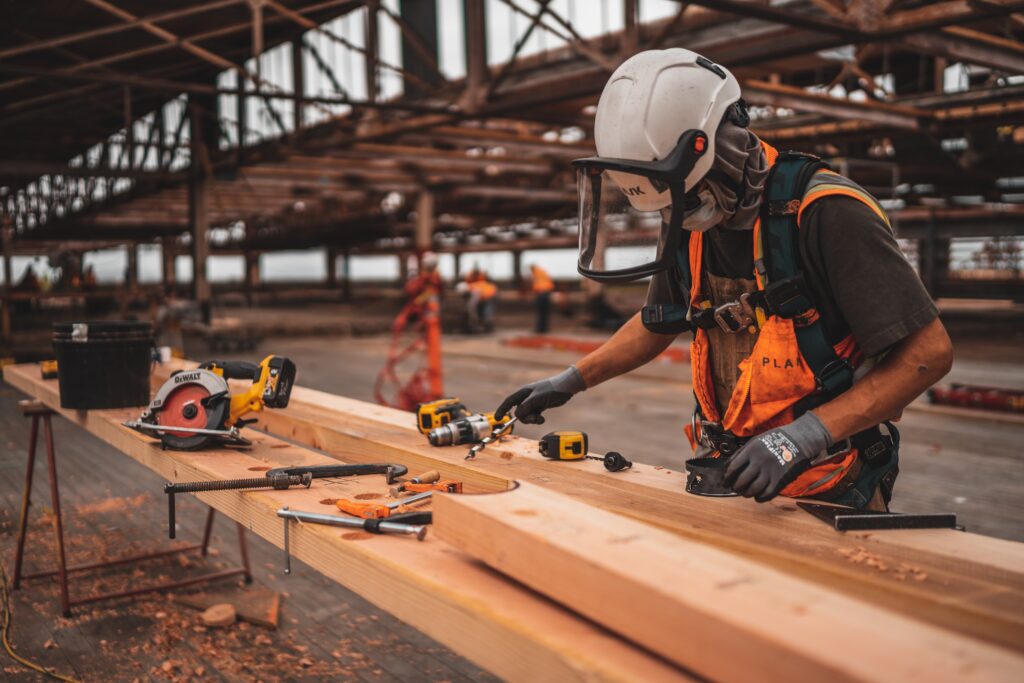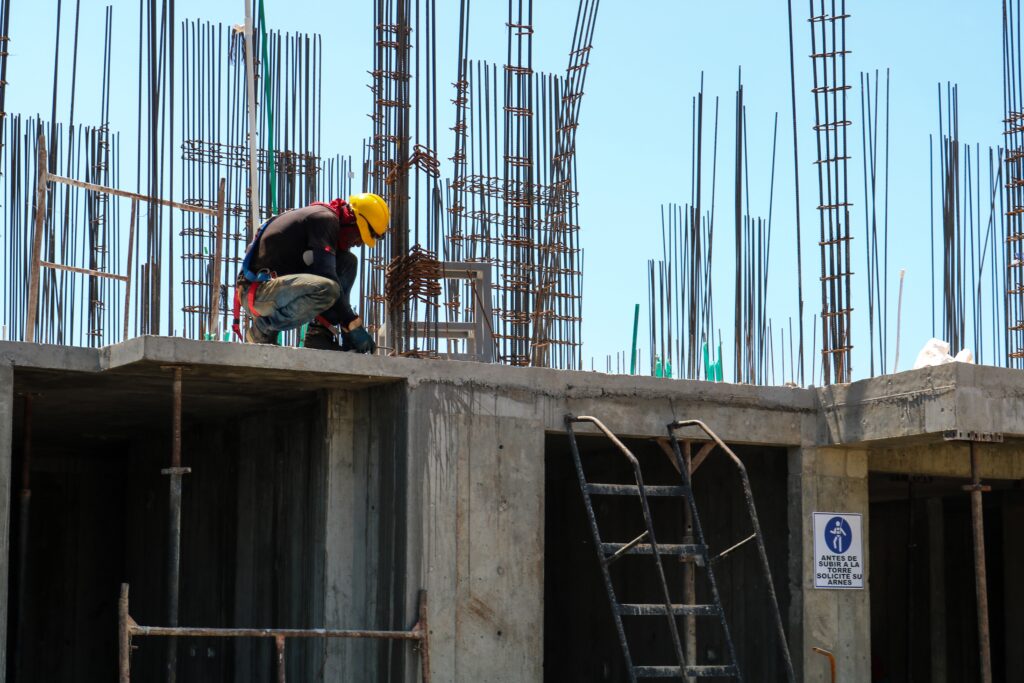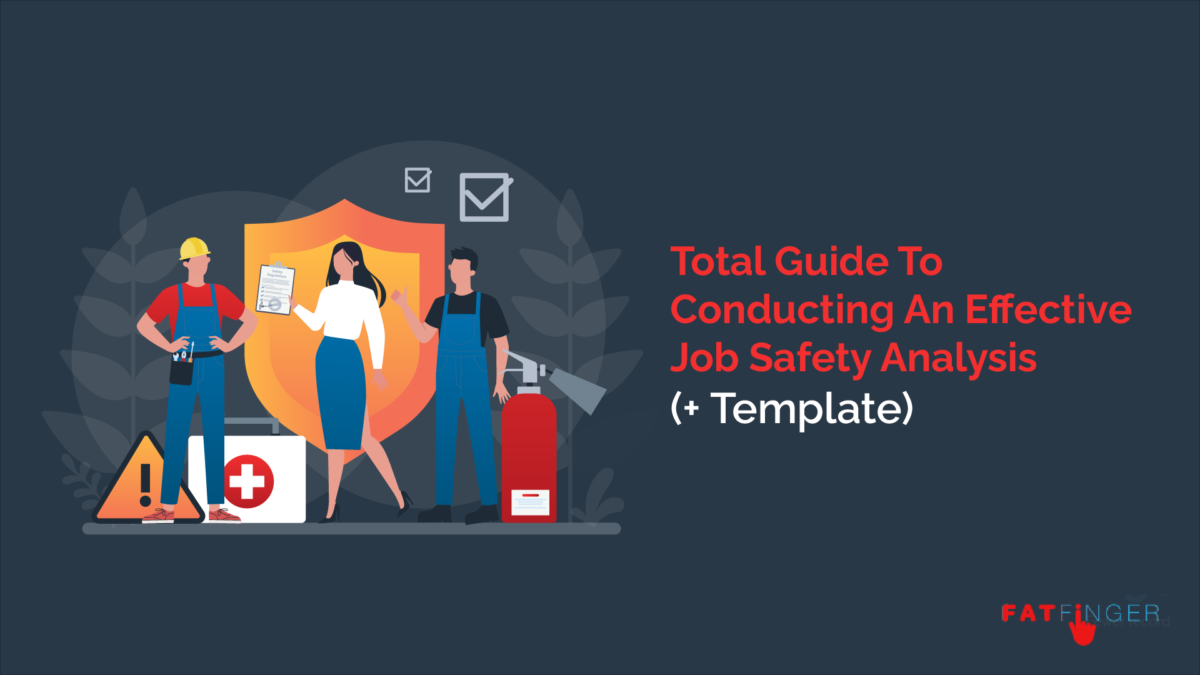A job safety analysis (JSA) is a procedure that helps integrate health and safety practices into a particular job operation or task.
The ultimate goal of a job safety analysis (sometimes referred to as job hazard analysis), is to recognize potential risks and/or hazards in each stage of a task that workers must complete.
Supervisors and/or job safety specialists will then use that information to recommend and implement the safest way to complete those tasks.
A JSA is a written procedure. Supervisors, managers, and/or job safety specialists must usually conduct it before a job starts. You can also conduct it if you’ve made any changes to a particular task.
It’s worth noting that when talking about a job safety analysis, we can use the terms “job” and “task” interchangeably. This refers to a specific work assignment rather than the overall job itself. For example, “operating a grinder” or “changing a tire” rather than broader tasks such as X or Y.
Why is a job safety analysis so important?

There are several reasons why JSAs are so important for your business. The most important one? It doesn’t require the worker to rely on their individual memory when trying to safely complete a task.
Plus, the more a worker performs a job safety analysis before completing assignments, the more likely they are to recognize potential hazards.
So not only does it simply increase the job knowledge of the person performing the task, but it’s a concrete, measurable way to ensure that you tick every single safety box. Here are three more ways a job safety analysis can benefit your business:
- Meet safety standards
JSAs help keep employees safe.
But they also comply with job safety laws and protect you from any legal or financial trouble if an incident occurs.
When you complete a JSA, you ensure that you’re meeting your regulatory body’s health and safety standards.
- Efficient employee onboarding
According to a study by the Institute for Work & Health, new employees are three times more likely to have an injury compared to employees who have been working at a company for over one year.
But when you implement a job safety analysis, you can onboard them as quickly and efficiently as possible. Think of it as speeding up the learning process.
New employees can refer back to their handbook whenever they need it.
They also get a complete and detailed breakdown of the exact steps they need to take before completing each assignment.
- Open communication between employees
Typically, safety professionals will work with your supervisors to create the initial job safety analysis. They’ll then give it to more supervisors and employees to comment and review. After that, they’ll finalize the JSA and give it to employees.
This process includes multiple levels of your team and can help decrease fear and stigma around the conversation.
What are the two types of job safety hazards?
You might commonly see job safety hazards usually separated into two groups:
Health hazards
This is any hazard in the workplace that can cause a health-related issue. This could be respiratory problems due to exposure to certain chemicals.
Safety hazards
This is any hazard in the workplace that can cause a safety-related incident. For example, if a worker falls off a ladder or a piece of moving machinery catches a body part.
We can also break workplace hazards down even further, depending on what causes each risk:
Physical object hazard
This includes any type of physical object that can cause a health or safety issue if touched, inhaled, ingested, etc. These could be things like exhaust gasses, certain chemicals, hot surfaces, etc.
Hazardous work
This type of hazard includes any task requiring a specific qualification or permit from the worker.
Care duty breaches
This refers to any company or legislative rules that restrict or determine how workers can perform tasks, and which tasks they are allowed to perform. In construction businesses, this is usually the Occupational Safety and Health Administration (OSHA).
What are the four basic steps of a job safety analysis?

The process of a JSA has four clear steps and two follow-up steps. Here’s an overview:
Step 1: Identify a job to analyze
The first step is to prioritize work tasks and make an educated decision on which tasks you should analyze first.
Eventually, you’ll need to complete a JSA for every task performed in your workplace. But when you start, you’ll want to create an analysis for the most crucial tasks first.
You can identify where those tasks are by simply looking at which assignments have the highest safety risks. In construction companies, for example, tasks that involve fall protection should be at the top of the list. Here’s a list of factors to help you determine the most critical tasks to analyze:
- Tasks that are fairly new and therefore not undergone safety checks
- Tasks that present high accident frequency
- Tasks that present high accident severity
- Jobs with high potential for injuries/accidents/illnesses
- Infrequently performed tasks
Step 2: Break the job down into a sequence of tasks
The second step is to break down the job into the steps required to complete it from start to finish. This includes any prep work that happens before the task.
This step is crucial, even if it feels tedious. But you can only spot risks and hazards if you examine every single step in the process. Here are a few things to note when identifying the tasks involved in each task:
- Ensure that you record each step in the correct sequence. Recording steps in the wrong order may overlook potential risks or can create brand new risks altogether!
- Record accurate details of the actual task, rather than the method used to complete it
- Start each sequence with an action verb, ie. “turn on the machine”, “clean up the X”, etc.
Step 3: Determine potential hazards in each of the above steps
So now you’ve broken the task down into a smaller sequence of tasks. It’s time to identify any risks and hazards that may exist during any time during the task.
You may not identify any risks and that’s okay. Remember to always analyze the task’s environment in case there are any hazards there.
Once you determine the possible hazards, you need to decide the risk of injury that each one may pose.
Here are some examples of questions a job analyst might ask when trying to identify potential hazards, taken from a Harvard fact sheet on environmental health, safety, and emergency management:
- Can any body part get caught in or between objects?
- Do tools, machines, or equipment present any hazards?
- Can the worker make harmful contact with moving objects?
- Can the worker slip, trip, or fall?
- Can the worker suffer strain from lifting, pushing, or pulling?
- Is the worker exposed to extreme heat or cold?
- Is excessive noise or vibration a problem?
- Is there a danger from falling objects?
- Is lighting a problem?
- Can weather conditions affect safety?
- Is harmful radiation a possibility?
- Can the worker make contact with hot, toxic, or caustic substances?
- Is there dust, fumes, mists, or vapors in the air?
Step 4: Determine preventative measures to overcome identified hazards
You’ve identified the jobs you want to analyze. You’ve broken down the steps involved in completing the task, and you’ve identified any risks in the process. The last step in the process is to identify and create preventative safety controls to avoid potential accidents and injuries.
Here are a few tips to implement solutions to prevent hazards:
- Eliminate the hazard. When you can’t mitigate the risks of a task, the most effective strategy is to eliminate it altogether and create a new one. That could mean implementing completely different processes, tools, materials, environments, etc.
- Contain the hazard. Machine guards or work booths are alternatives when you can’t eliminate the hazard.
- Modify the work procedure. Look for areas in the process that you can modify. For example, moving the sequence of tasks around or adding extra preventative steps.
- Reduce task frequency. At the very least, when you can’t eliminate, contain, or modify the task, you should think about how much you can minimize the necessity of the task.
Step 5: Communicate your findings
Now that you’ve completed your job safety analysis, it’s time to share it with all appropriate employees. You can do this by first distributing copies to all employees. You should then include the job safety analysis in all employee manuals. Include them in handbooks and any training programs and materials you have.
It’s also crucial that you make the job safety analysis accessible to all employees. You should do this regardless of whether they need to complete the mentioned tasks or not.
As well as distributing hard copies, you should also ensure that everyone has a digital copy and that it’s available on any internal software or programs you use as a team.
Step 6: Review and revise
For a job safety analysis to serve its purpose, you need to review and revise it periodically.
You could conduct a periodic follow-up once a month. For example, where a supervisor observes a procedure while referring to the JSA.
Another opportunity to review your JSA is straight after an incident if one occurs. Here’s where you can identify any areas that you didn’t monitor closely.
While investigating an incident against the JSA, you’ll be able to identify one of four things. Were there any gaps in the analysis? Did the worker follow the analysis correctly? Does this worker require further JSA training? Is the analysis clear enough?
Another opportunity to review your is whenever you introduce new equipment or processes.
How to perform a job safety analysis

There’s no set way to perform a job safety analysis, and preferences vary across organizations, teams, industries, etc. However, one element is crucial.
Supervisors or managers should observe the worker while they are actually performing the task.
The person supervising should not be anyone responsible for performing the task. Instead, you should select an objective team member who can clearly see all aspects of the task while it’s happening.
Other methods of performing a job safety analysis include group discussions. This is when experienced team members can openly share their recommendations for improving the safety of each job operation.
Create an effective job safety analysis with FAT FINGER
If you want to conduct an accurate and timely job safety analysis, you’ll want to use checklists.
Using FATFINGER’s easy-to-use form builder, you can list each step of the JSA process that we’ve outlined in this post. Simply work your way through the checklist whenever you need it.
Our templates are digital, which makes it easier to store all your JSAs in the same place and review and revise them in just a few clicks. No more messy paperwork necessary.
We’ve got lots of templates ready for you to use right here. Simply sign up and add your favorite templates to your account for free. Or build your own checklist template and customize it to your organization. It’s as simple as that!
What’s so handy about the templates is that you can give employees access to the correct JSA whenever necessary.
Right from your phone, computer, tablet, or any other device you’re using, anywhere, anytime.
Employees can complete it on their own device, wherever they are, and you can easily save, record, and pull it back up whenever you need it.
To show you exactly how it looks in action, watch this short video. It demonstrates how the drag-and-drop form builder works and how simple the process is to keep your employees safe from work-related incidents.


